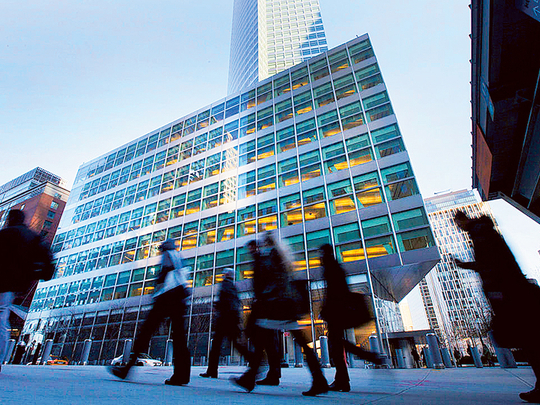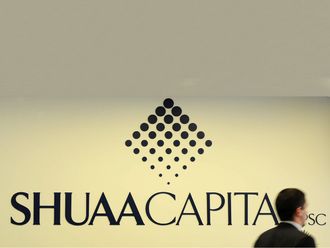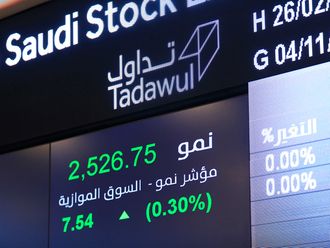
New York/London: Mergers and acquisitions (M & A) this year reached their highest first-quarter level since 2007, as companies defied headwinds such as currency and oil price volatility and sought growth-boosting deals amid favourable financing conditions.
Companies around the world announced deals worth a total of $811.8 billion (Dh2.98 trillion) in the first quarter, up 21 per cent year-on-year, on the back of slightly fewer but bigger deals, according to preliminary Thomson Reuters data.
“The deal activity in the first quarter was driven by continuing cash accumulation at companies, CEO confidence, inexpensive debt financing and pressure from activist shareholders,” said Kenton King, a partner at law firm Skadden, Arps, Slate, Meagher & Flom LLP.
Overall, 8,669 deals were announced in the quarter, down from 9,072 a year ago. But dollar volumes were up because bigger companies agreed to deals. Some of these happened because buyers opted to use their own stock, rather than cash, as currency amid strong equity valuations. Health care, real estate and telecommunications proved to be the busiest sectors.
“For a while it was all stuff on the edges; private equity, spin offs ... This M & A market is now driven by big corporate strategic deals, people doing the dream deals that they have been thinking about for some time,” said Gregg Lemkau, Goldman Sachs Group Inc.’s co-head of global M & A.
Cross-border M & A rose 5.6 per cent to $253.7 billion, mainly the result of emerging markets M & A, which was up 31 per cent. This is because the stronger dollar has made some of these targets cheaper for US companies, though dealmakers cautioned that foreign exchange rates would have to stabilise for both sides to feel confident.
“Most executives and boards do not like volatility when pursuing M & A,” said Robin Rankin, co-head of global M & A at Credit Suisse Group AG. While currency changes have made companies appear cheaper relative to their dollar price a few months ago, earnings forecasts at European companies have been squeezed by weakness in the region’s economy, eliminating any foreign exchange benefit, Rankin added.
Asia-Pacific M & A came in at $194 billion, up 63 per cent year-to-date, its strongest performance on record. But Cheung Kong Holdings Ltd’s $45.4 billion deal for Hutchison Whampoa Ltd, driven by Hong Kong billionaire Li Ka-shing restructuring his holdings, was responsible for most of the surge.
Excluding that deal, Asia-Pacific M & A was up 27 per cent, in line with US M & A, which saw a 30 per cent rise in volumes to $399.1 billion. Europe, on the other hand, marked the slowest start in M & A in two years. It reported a 4 per cent decline in volume to $168.1 billion. European companies were reluctant to initiate deals themselves given the region’s economic woes and the euro’s weakness.
“The bid into Europe is stronger than the bid within Europe. If you look at the US as a source of deals into Europe, you’re seeing a strong macroeconomic environment, high levels of confidence and buoyant financing markets,” said Richard Sheppard, head of UK M & A at Deutsche Bank AG.
Goldman Sachs jumped from No 4 to No 1 in the global M & A advisory league tables, with 89 deals totalling $188.7 billion. This time last year, Goldman had advised on 97 deals totalling $152.7 million. JPMorgan Chase & Co remained No 2 with 63 deals totalling $186.7 billion. Morgan Stanley slipped to No 3 from No 1, with 66 deals worth $145.6 billion.
Based on their pipeline of opportunities, dealmakers say that it is unlikely full-year 2015 M & A volumes will beat those of 2014, which were the highest on an annual basis since 2007.
“It doesn’t feel to me that, when the dust settles, we will be looking at a market that is up 20 per cent in 2015 on what was a very good year last year,” said Peter Tague, co-head of global M & A at Citigroup Inc.
“It will be a strong year, but I don’t expect full-year growth to remain as robust as the first quarter.”












